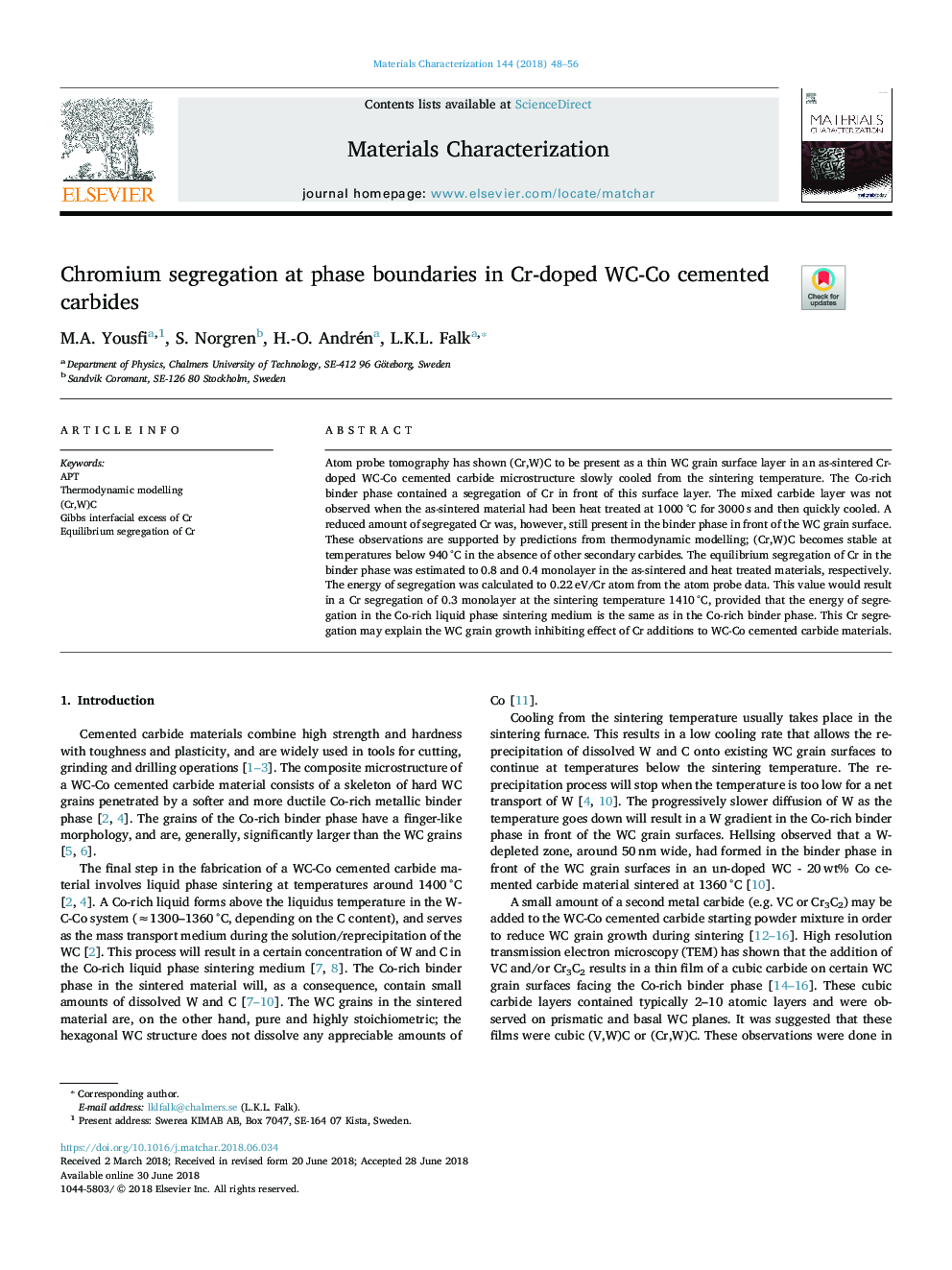| Article ID | Journal | Published Year | Pages | File Type |
|---|---|---|---|---|
| 7968917 | Materials Characterization | 2018 | 9 Pages |
Abstract
Atom probe tomography has shown (Cr,W)C to be present as a thin WC grain surface layer in an as-sintered Cr-doped WC-Co cemented carbide microstructure slowly cooled from the sintering temperature. The Co-rich binder phase contained a segregation of Cr in front of this surface layer. The mixed carbide layer was not observed when the as-sintered material had been heat treated at 1000â¯Â°C for 3000â¯s and then quickly cooled. A reduced amount of segregated Cr was, however, still present in the binder phase in front of the WC grain surface. These observations are supported by predictions from thermodynamic modelling; (Cr,W)C becomes stable at temperatures below 940â¯Â°C in the absence of other secondary carbides. The equilibrium segregation of Cr in the binder phase was estimated to 0.8 and 0.4 monolayer in the as-sintered and heat treated materials, respectively. The energy of segregation was calculated to 0.22â¯eV/Cr atom from the atom probe data. This value would result in a Cr segregation of 0.3 monolayer at the sintering temperature 1410â¯Â°C, provided that the energy of segregation in the Co-rich liquid phase sintering medium is the same as in the Co-rich binder phase. This Cr segregation may explain the WC grain growth inhibiting effect of Cr additions to WC-Co cemented carbide materials.
Keywords
Related Topics
Physical Sciences and Engineering
Materials Science
Materials Science (General)
Authors
M.A. Yousfi, S. Norgren, H.-O. Andrén, L.K.L. Falk,
